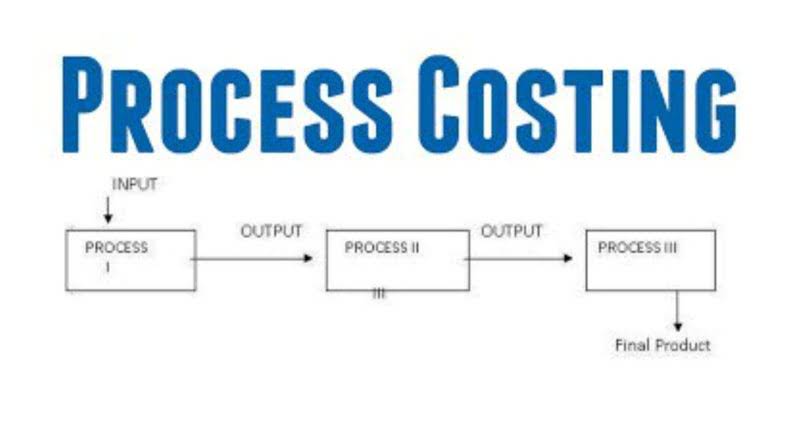Understanding Income Recognition: How It Impacts Your Financial Situation

When a company generates net income, this profit is added to its retained earnings balance. As retained earnings are a part of total equity, an increase in net income leads to an increase in a company’s overall equity. Beyond compliance, proper revenue recognition builds trust with stakeholders, reduces the risk of financial restatements and ensures consistent reporting practices. Yet, despite its importance, many organizations struggle with errors stemming from outdated processes or insufficient controls. Revenue recognition practices vary by industry, reflecting operational and regulatory distinctions. The telecommunications sector, for instance, deals with bundled contracts requiring nuanced approaches to allocate revenue to individual service components.
- It is important for businesses to accurately report their income to comply with tax regulations, maintain transparency, and ensure fairness in financial dealings.
- Ultimately, this gives the business a more accurate line of sight on its financial performance.
- Instead, it has lines to record gross income, adjusted gross income (AGI), and taxable income.
- However, experienced investors analyze growth sustainability by examining earnings quality, cash flow consistency, and operational alignment.
- Microsoft Corporation, a global technology giant, follows the accrual basis of accounting for income recognition.
- Challenges and controversies arise in income recognition, affecting financial reporting.
- Various performance metrics such as return, risk-adjusted return, and tracking error are used to evaluate the portfolio’s performance.
the Revenue Recognition Principle and How It Relates to Current and
- For instance, revenue might be recognized when goods are delivered or services are performed.
- The correct option is e) A firm that capitalizes on diversity and has few diversity problems.
- Option C, «an organization where the top managers are all female,» represents a female-led organization and not necessarily a multicultural organization.
- The benchmark serves as a reference point to assess how well the portfolio has performed relative to a specific market or investment strategy.
- But if the company sells a valuable piece of machinery, the gain from that sale will be included in the company’s net income.
- Or they can look up the breakage rate for similar products made by other companies.
- And he pays very close attention to «Profit Margins.» He can tear through the financial industry’s witchcraft by looking at Profit Margins.
By analyzing the cash flow statement alongside income recognition policies, individuals can make informed decisions about investing or partnering with a business. For example, a software company may recognize revenue from software sales when the product is delivered to customers, rather than when cash is received. Understanding the income statement helps individuals and investors evaluate a company’s financial health and make better investment choices. For example, when a customer purchases a software license, Microsoft recognizes the revenue over the license’s expected life. By adhering to this method, Microsoft ensures transparency in their financial statements and provides investors with a clearer picture of their long-term financial health.

Estimated Expenses
This approach also aligns with industry standards, promoting consistency and comparability among companies. For example, when Apple sells an iPhone, it recognizes the revenue immediately, even if the customer pays in installments. By employing such a method, Apple ensures that its financial statements accurately represent its sales and profitability. This allows investors and stakeholders to make informed decisions based on the company’s true financial position. Earnings management is a practice that can manipulate income recognition to achieve desired financial outcomes. Companies may employ tactics such as accelerating revenue recognition or deferring expenses to enhance their reported earnings.
Risks of improper revenue recognition

To address this, robust cash flow forecasting and adjustments to credit policies are essential. Revisiting working capital strategies ensures sufficient liquidity to accommodate timing differences. By employing the Completed Contract Method, companies can better align their income recognition with actual project completion and gain a clearer understanding of their financial performance.
How Does Net Income Increase or Decrease Equity?
Option C, «an organization where the top managers are all female,» represents a female-led organization and not necessarily a multicultural organization. Option B, «a company that hires people of all races,» represents a diverse organization but not necessarily a multicultural organization. It could still be a diverse organization that has not taken steps to embrace multiculturalism and create an inclusive environment. The Companies Act governs companies, which are separate gym bookkeeping legal entities from their owners, while the Partnership Act governs partnerships, which are not separate legal entities from their owners. Which function or department below records the decrease in inventory due to a sale? Inventory control Step-by-step solutionStep 1 of 3 Decrease in inventory The inventory control records the decrement in the inventory due to sale.

Therefore, it can be calculated after adjusting gross revenue with the discounts, returned products, or other direct selling expenses. When and how a business recognizes revenue has a myriad of implications that have a direct impact on overall financial health. Having the right expertise managing the financials can – and usually does – make all the difference. Sound bookkeepers are usually good at helping businesses report the right taxable income at the right time. Ultimately, this gives the business a more accurate line of sight on its financial performance. PwC refers to the US member firm or one of its subsidiaries or affiliates, and may sometimes refer to the PwC network.

Industry Practices
The cash basis recognizes income when it is received, while the accrual basis recognizes income when it is earned. Richard Roll’s reference to benchmark error suggests that the benchmark used to evaluate portfolio performance may not accurately represent https://vallabhfarms.com/?p=3466 the portfolio manager’s ability. Benchmark error can arise from several factors, such as inappropriate selection of the benchmark, limitations in the benchmark’s composition, or discrepancies in the benchmark’s returns. The net assets will increase, indicating that net income recognition always increases net assets.
Understanding income recognition helps individuals and businesses make informed financial decisions and ensures transparency in financial reporting. Income recognition refers to the process of recording and reporting revenue in a company’s financial statements. It is a fundamental aspect of accounting that determines when and how businesses recognize revenue from sales or provision of services. Understanding this concept is crucial for accurate financial reporting and decision-making.
- This stickiness makes it more expensive for firms to hire workers, leading to high unemployment and a slower recovery of the economy.
- However, using those numbers for financial calculations will mislead us into thinking that the revenue is more than what we got.
- The income statement reflects the revenue earned during a specific period, allowing investors to assess a company’s profitability.
- Which function or department below records the decrease in inventory due to a sale?
- That gain might make it appear that the company is doing well, when in fact, they’re struggling to stay afloat.
- Companies should clearly articulate the rationale for accelerated revenue recognition and its impact on future earnings.
Under this method, the entire revenue net income recognition always increases: and expenses are recognized at once when the project is completed. This can help businesses achieve a more accurate representation of their financials and avoid potential distortions in profitability. However, it may also lead to variability in reported earnings from one period to another, making it necessary to closely manage cash flow and anticipate potential fluctuations.
